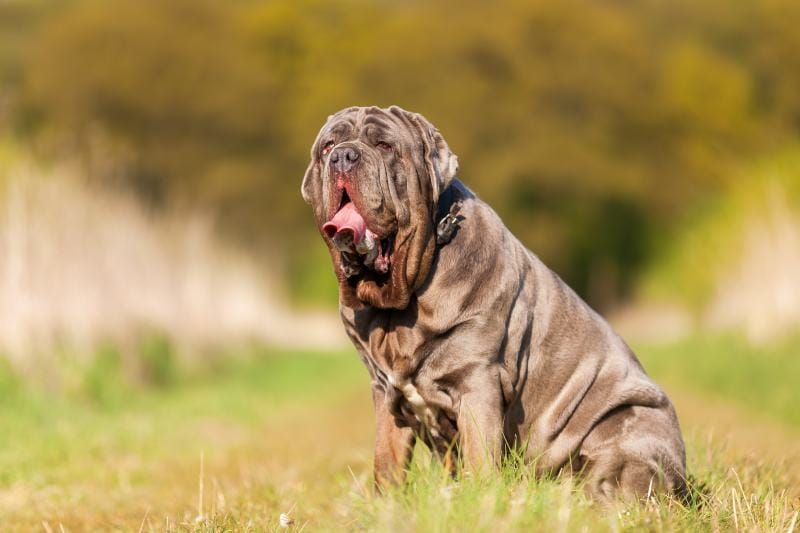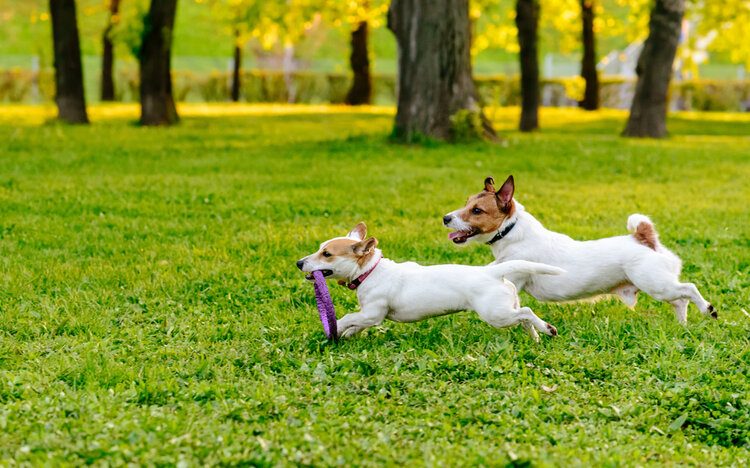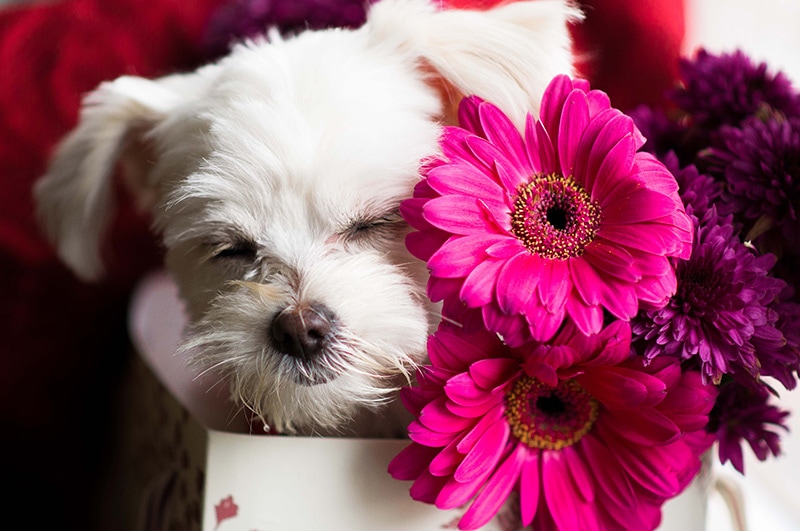15 Dog Breeds With Dreadlocks: History, Pictures & Facts

Updated on
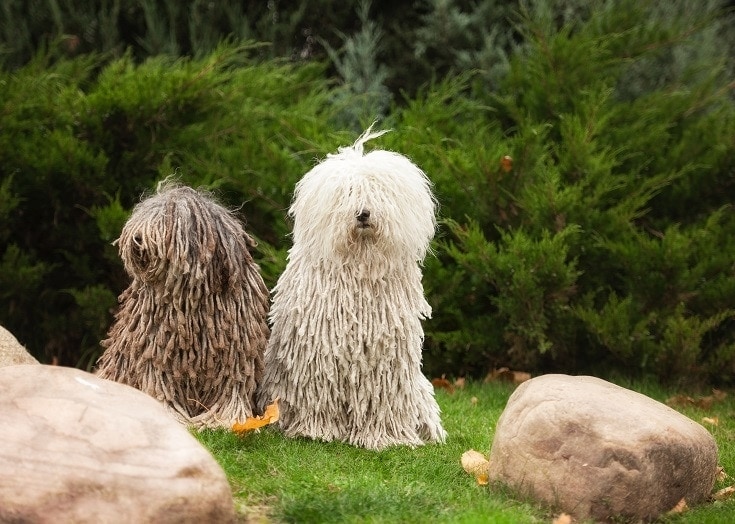
Click to Skip Ahead
Some dogs have short coats; others pack double layers of fur. And there we have the rock stars of Canine Kingdom: pups with dreadlocks. If you’d like to adopt such a pet, this post is for you! Here, you’ll find 15 corded breeds that turn heads and steal shows. The list includes Komondor, Bergamasco, and Bearded Collie pups, to name a few.
That said, some of these dogs have hair strands that cord naturally, while others may need a little (or a lot) of help from you. So, join us, and let’s take a closer look at the “true” dreadlock breeds and the wannabes and also talk about how to take care of a dog’s dreads. Here goes!
How Are Dogs With Dreadlocks Classified?
Any dog with long and curly/wavy strands of hair easily twisted, braided, and interlocked can have dreadlocks. This exotic style is mostly exclusive to dogs with hair, not fur. The scientific term for these “ropes of hair” is cords, and no pup is born with its coat already looking like that. For a select few dogs, this natural process occurs over time.
The outer coat wraps itself around the undercoat, turning into thick cords of hair. And, on average, it takes two years for the locks to form. However, if the pet’s hair is long and straight enough, yet it doesn’t get corded on its own, you can always lend a helping hand! The American Kennel Club officially recognizes seven corded breeds:1
- Bergamasco Sheepdog
- Havanese
- Komondor
- Poodle
- Puli Dog
- Pyrenean Shepherd
- Spanish Water Dog
The 15 Dog Breeds With Dreadlocks
Dogs With Natural Mats/Locks
1. Komondor
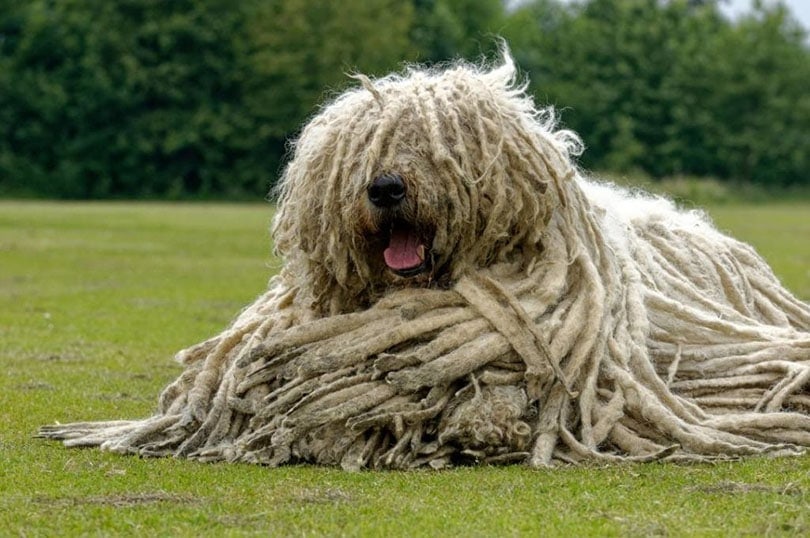
| Origin: | Hungary |
| Lifespan: | 10–12 years |
| Height: | 5–27.5 inches |
| Weight: | 80–100 pounds |
Bred by Hungarian farmers to serve as shepherds and guardians, Komondor dogs are smart and quick to adapt. They’re also big, strong, and come packed with heaps of muscle. With that, these pups are quite flexible and agile and can easily handle hard work. More importantly, they rock a long, corded coat that makes them look like four-legged mops.
It’s soft, fluffy, and rather heavy, and gets curly as the pup turns into an adult and the hair starts to form locks. It’s up to you to separate the cords.
2. Bergamasco Sheepdog

| Origin: | Italy |
| Lifespan: | 13–15 years |
| Height: | 22–24 inches |
| Weight: | 57–85 pounds |
Hailing from Italy, Bergamasco Sheepdogs are praised for their witty minds, sweet temper, and protective personality. But what about those dreadlocks? How are they formed? These dogs have different hair textures (three in total). As the pups grow, the hair flocks get woven together. That creates thick layers of twisted and entangled hair mats that protect against harsh weather.
Cording might not be an option here, but you’ll get long and thick mats. To keep the coat in shape, groom it to even out the dog’s natural oil.
3. The Puli Dog
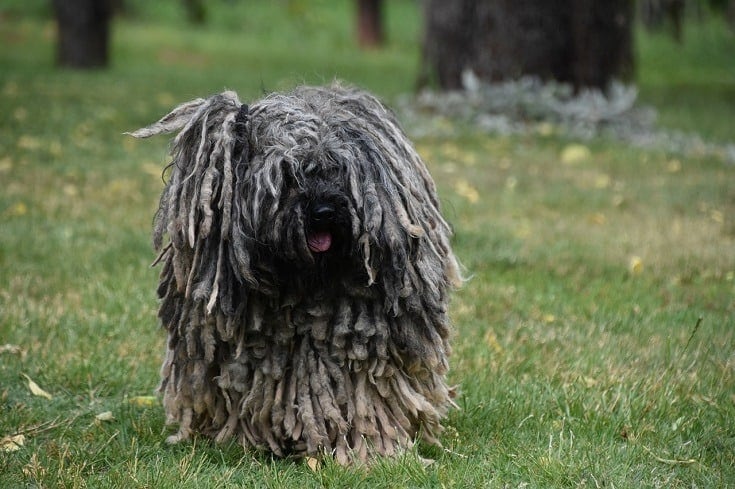
| Origin: | Hungary |
| Lifespan: | 11–16 years |
| Height: | 16–17 inches |
| Weight: | 25–35 pounds |
Here, we have another cute and cuddly doggo from Hungary with a one-of-a-kind coat. It’s long and corded and forms naturally, turning the Puli into a sought-after breed. It’s wooly, too, and practically waterproof. However, if you don’t pull the cords apart, that hair can cover the pup’s entire face in super-thick locks! That’s right: these dogs aren’t exactly low maintenance.
But the trendy coat is not the only thing the Puli brings to the table. These compact dogs are incredibly loyal and affectionate, not to mention strong and agile for their size.
4. Poodle
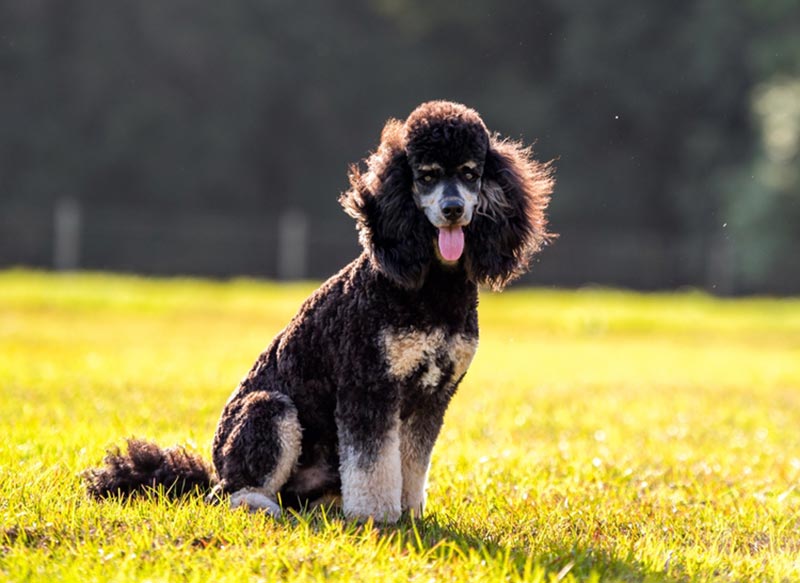
| Origin: | Germany, France |
| Lifespan: | 10–18 years |
| Height: | 16–20 inches |
| Weight: | 40–70 pounds |
Born and bred as a water dog, the Poodle is an excellent swimmer, capable of retrieving prey in the most challenging terrain. The coat, in turn, is long and curly (and either soft or harsh) and does a great job of protecting the pup from temperature extremes, making it a weatherproof breed. More good news: Poodles are categorized as hypoallergenic (they shed minimally).
Don’t expect the dreadlocks to occur naturally, though. You will have to do some combing to get there.
5. Spanish Water Dog
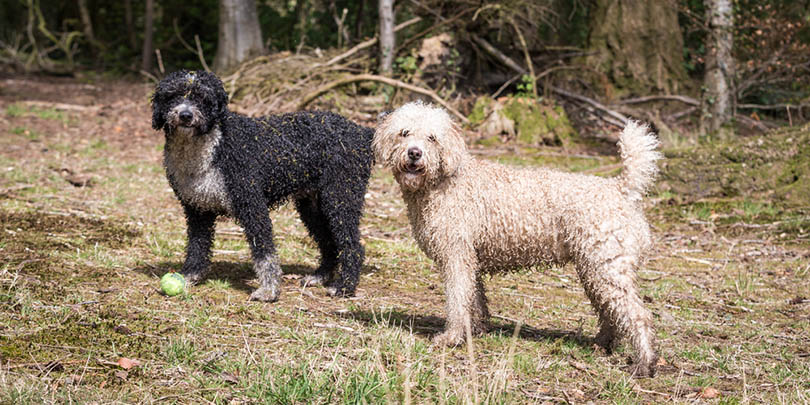
| Origin: | Andalusia (Spain) |
| Lifespan: | 10–14 years |
| Height: | 15–20 inches |
| Weight: | 30–50 pounds |
Just like the name suggests, these curious, playful, and sweet dogs are of Spanish descent. Back home, they were mostly used as guardians, hunters, retrievers, and sheepdogs. They are equally happy to work and to have fun with their favorite humans. That said, the active, upbeat, and oh-so-curious Spanish Water Dogs can be a handful for a first-time owner.
But the wooly coat makes it all worth your while. The hair is curly, covers the entire body, and turns into cords on its own.
6. Havanese

| Origin: | Cuba |
| Lifespan: | 14–16 years |
| Height: | 9–12 inches |
| Weight: | 10–13 pounds |
Floppy ears, big brown eyes, and a face to die for: that’s the best way to describe the smart and curious Havanese dogs. As for their coat, it can be either straight or curly. And, if you put some effort into it, you should be able to turn the hair strands into dreadlocks. The hair is relatively long and grows fast, though, often forming mats that need to be removed.
7. Pyrenean Shepherd
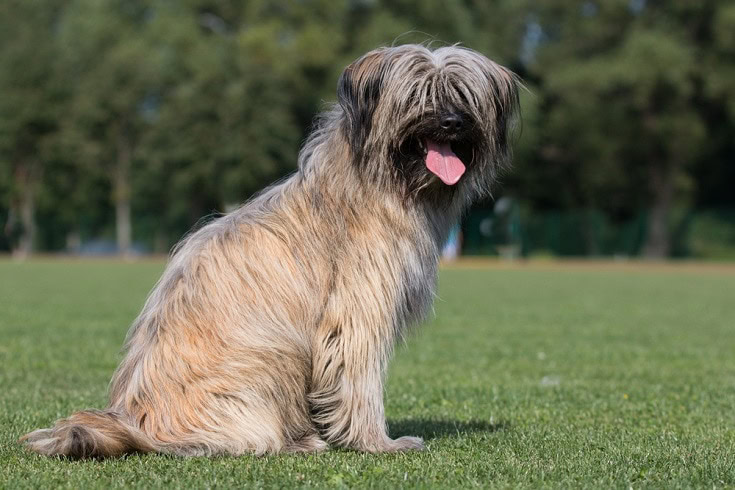
| Origin: | France |
| Lifespan: | 17–19 years |
| Height: | 15–21 inches |
| Weight: | 15–30 pounds |
If you’re looking for the golden middle between a mischievous pet and a hard-working herder, go with the Pyrenean Shepherd. This doggo has a superpower: it can steal your heart from a distance with its cute facial features, big personality, and enthusiasm. It’s equally tough, agile, smart, and has a signature free-flowing gait.
But let’s not forget about the coat! It can be either smooth- or rough-faced and look amazing when properly corded.
Dogs With Coats That Can Be Corded
8. Bearded Collie
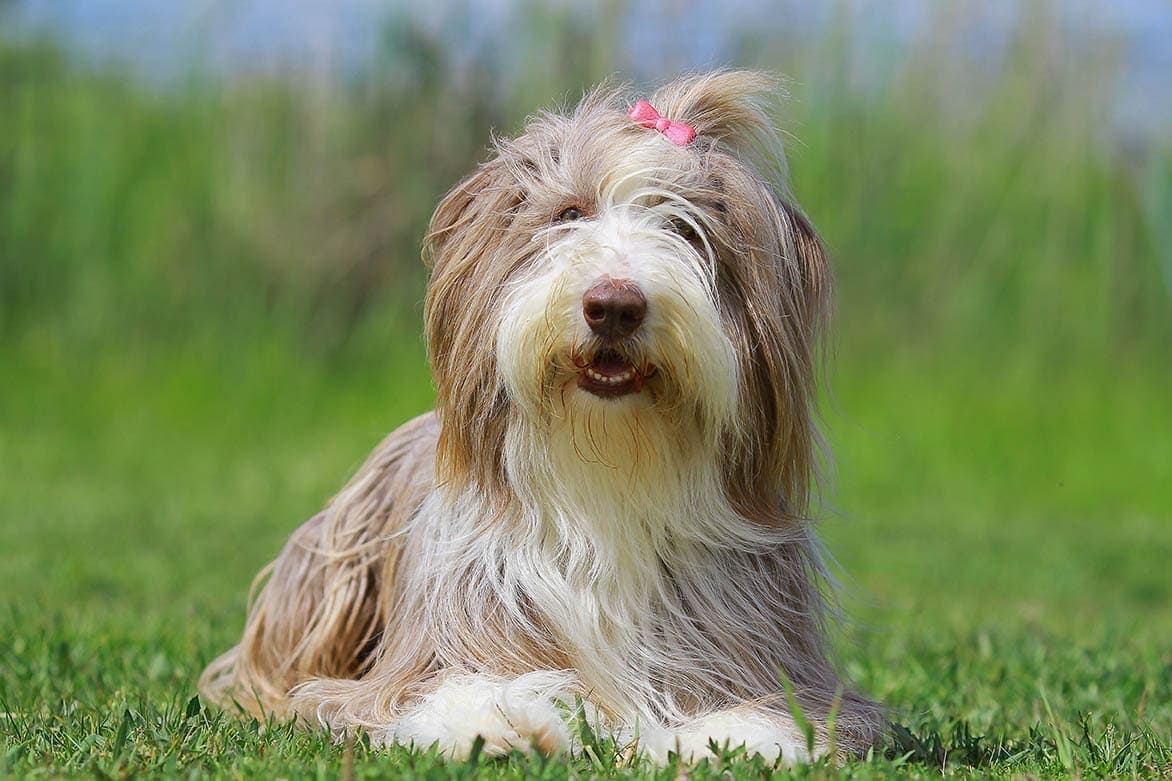
| Origin: | Scotland |
| Lifespan: | 14–15 years |
| Height: | 20–22 inches |
| Weight: | 45–60 pounds |
Ready for another herding doggo with a bubbly personality? Meet the Bearded Collie, an intelligent, energetic, and quick-to-catch-on Scottish breed. These guys proudly wear a long double coat with a harsh outer layer and a softer undercoat begging to be turned into tight braids. Plus, it protects the dog from rain, snow, dust, and extremely low or high temps.
Today, Bearded Collies enjoy being popular companions. They are friendly and patient but can also be a bit stubborn.
9. Afghan Hound
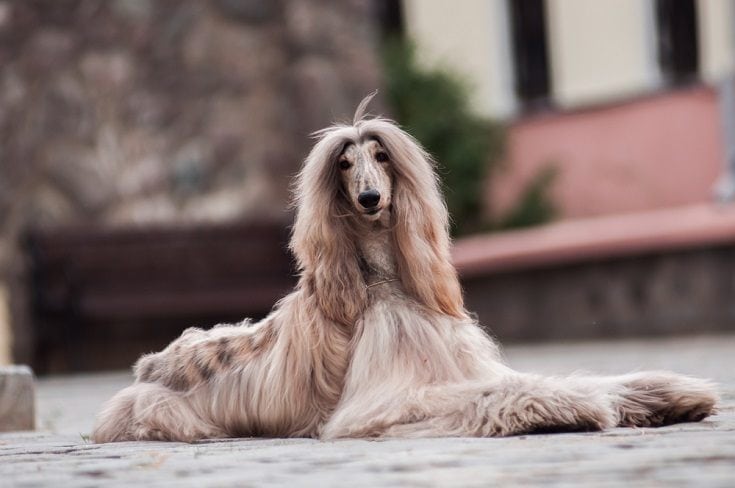
| Origin: | Afghanistan |
| Lifespan: | 12–18 years |
| Height: | 25–27 inches |
| Weight: | 50–60 pounds |
As far as the most exotic breeds go, the Afghan Hounds are right on top of the least. They are loyal, enduring, and well-suited for the unforgiving Afghan mountains. During the day, these four-legged wonders are often found lying on the carpet or the couch, but they’re also incredibly brave and protective. And don’t get us started on the thick and silky coat!
It goes hand-in-hand with the curly tail, slender body, and piercing eyes. Afghan Hounds are not cheap, though, and cost up to $5,000.
10. Yorkshire Terrier
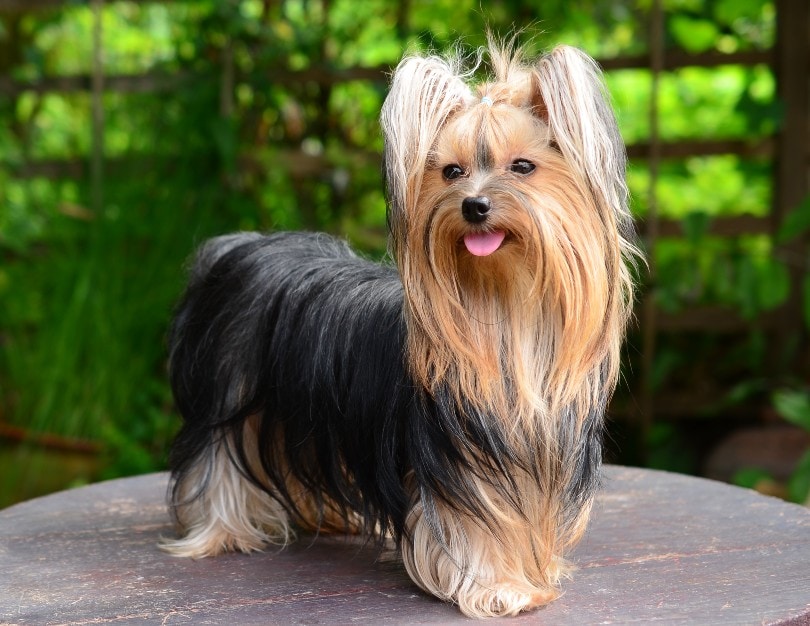
| Origin: | Yorkshire, United Kingdom |
| Lifespan: | 11–15 years |
| Height: | 7–8 inches |
| Weight: | 5–7 pounds |
Despite the miniature size (they rarely go over 7 pounds or inches), Yorkshire Terriers are bold and feisty, just like their bigger siblings. And charming doesn’t even begin to describe them! The perky ears, button nose, big, beautiful eyes, and “bossy” attitude make Yorkies exceptionally adorable. As for the long, silky coat, it allows pet parents to experiment with different haircuts.
If you want to go for something a bit exotic yet fitting for this little troublemaker, dreadlocks will be exactly what the doc ordered.
11. Labradoodle

| Origin: | Australia |
| Lifespan: | 12–16 years |
| Height: | 21–24 inches |
| Weight: | 50–65 pounds |
A hybrid between a Poodle and a Lab, the Labradoodle is worth every single bit of praise. It’s a friendly, easygoing doggo that likes to be at the center of attention. With that, it’s a high-maintenance breed. That coat sure does look amazing, but it also requires regular grooming. On the bright side, if you let the hair grow long enough, you can put it through a dreadlock makeover.
That will give this Australian pup a unique look that matches its busy, playful, and eager temperament.
12. Pekingese
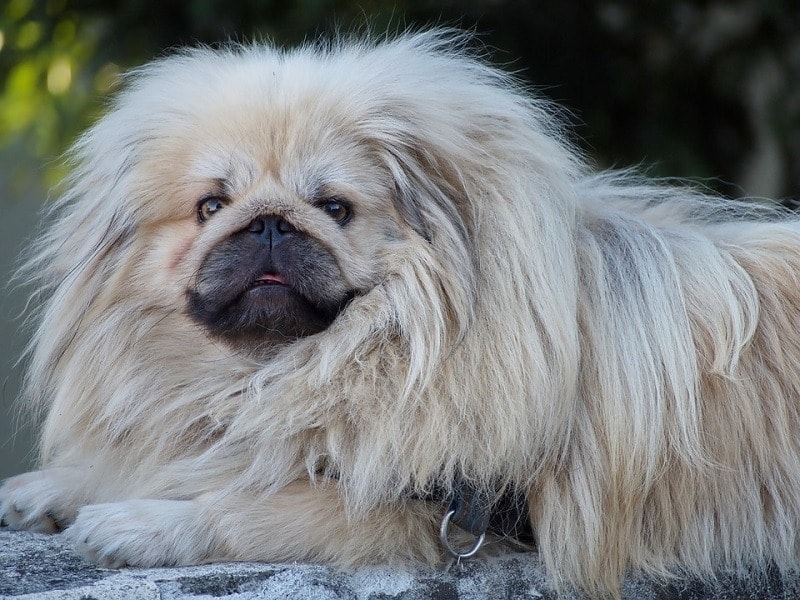
| Origin: | China |
| Lifespan: | 12–14 years |
| Height: | 6–9 inches |
| Weight: | 7–14 pounds |
Bred in China to serve as companion dogs for royal figures, Pekingese are equally intelligent, affectionate, and independent. And if you take proper care of this pup, it will quickly turn into your best friend. Still, why did the emperors like this breed so much? We bet that adorable face and long, luxurious coat had something to do with that.
It makes the Pekingese look like a tiny lion. So, you should try to matt the hair strands together (via braiding) and turn them into dreadlocks for a fancy new look.
13. Maltese
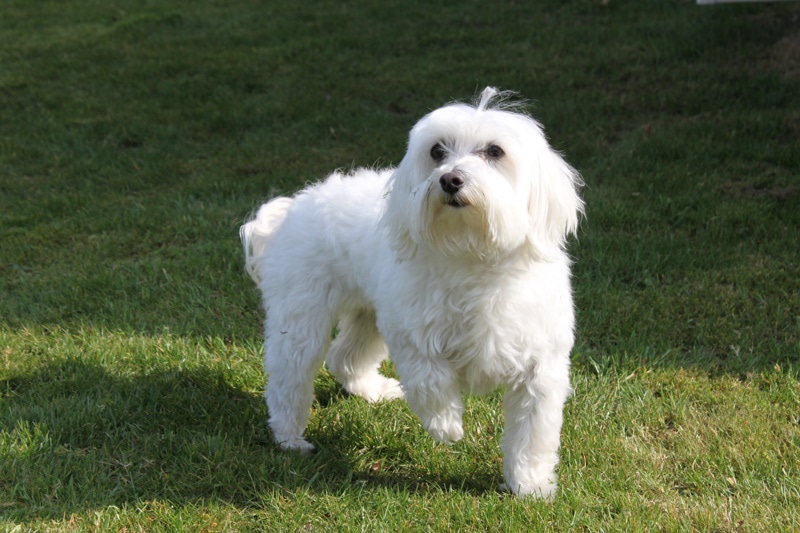
| Origin: | Malta |
| Lifespan: | 12–15 years |
| Height: | 7–9 inches |
| Weight: | 6–7.5 pounds |
Charming, affectionate, and alert, Maltese dogs are just as popular lap pets as the Pekingese. But dreads aren’t exactly the first hairstyle that their owners opt for. However, if you put your mind to it, you can give this toy pup the freshest haircut in the area! The floor-length, all-white coat is straight and silky, perfect for tying the hair strands together and forming cords.
This is important: although the coat doesn’t shed much (1/5 on the AKC scale), you will have to take regular care of it.
14. Briard
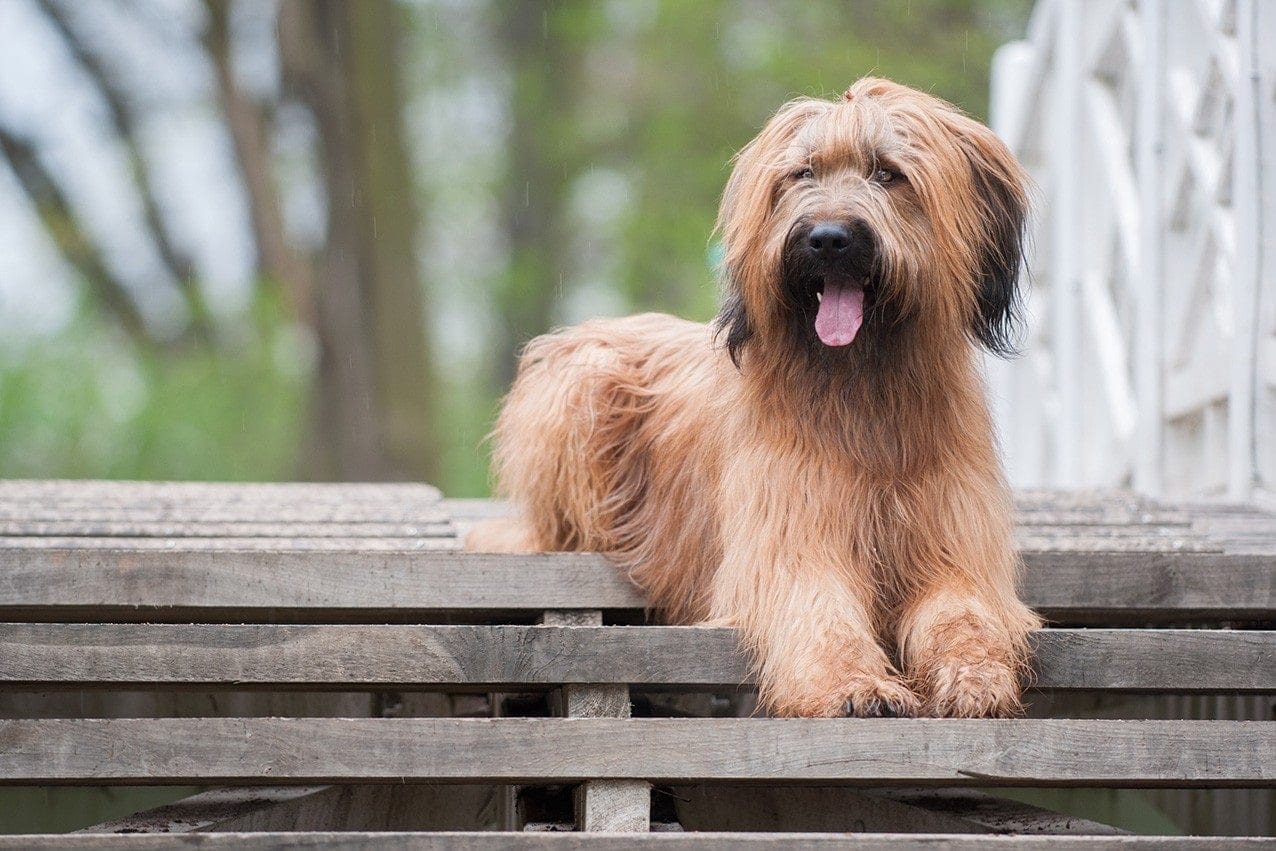
| Origin: | France |
| Lifespan: | 10–12 years |
| Height: | 22–27 inches |
| Weight: | 55–100 pounds |
These dogs sure do know a thing or two about hairstyles! Briards are born with a wavy, double-layer coat that can be black, gray, or tawny. The undercoat is nice and soft, while the outer coat is rather coarse. Together, they keep this French gent/lady warm. And if you want to go for dreadlocks, that’s also possible, although it’s a very rare sight for a Briard.
15. Old English Sheepdog
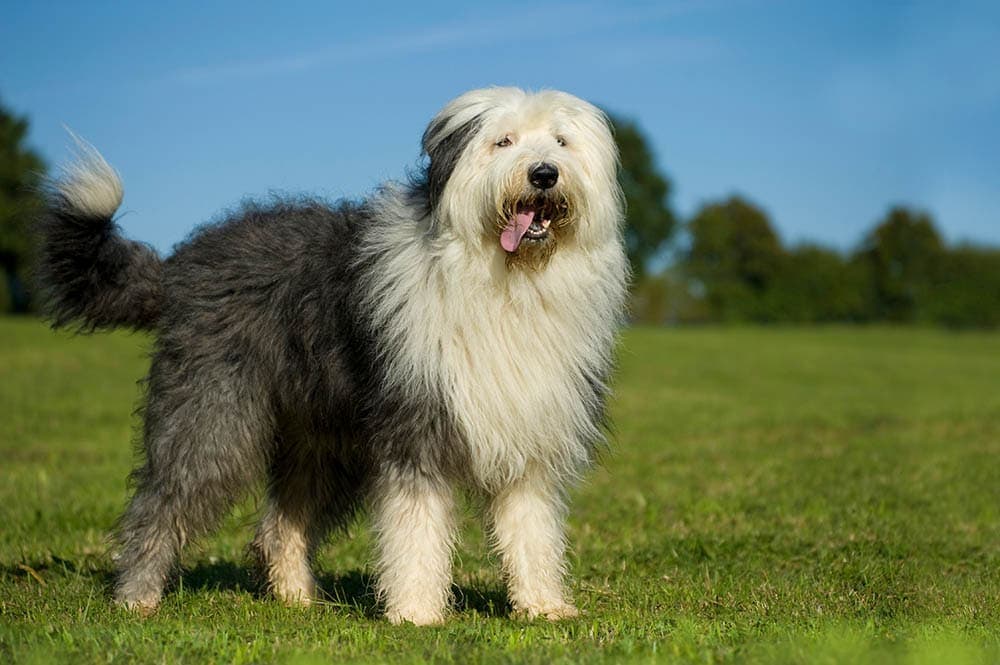
| Origin: | England |
| Lifespan: | 10–12 years |
| Height: | 21–22 inches |
| Weight: | 60–100 pounds |
The OG shaggy dogs have a lot in common with Briards. First, they have very similar lifespans, weight, and height. Secondly, they both rock peek-a-boo hairdo and have a furry coat. So, if you’re in the market for a doggo with a profuse, fluffy, and flexible coat that you can turn into rope-like strands, the Old English Sheepdog is a sure pick.
Taking Care of a Dog’s Dreadlocks: A Quick Guide
To keep the coat in tip-top shape, you’ll have to do quite a lot of cleaning. This is done to remove all the dirt, dust, debris, and excessive oil. And a quick bath or shower won’t cut it here: instead, we recommend putting each individual cord/dread into soapy water, wringing it out, and drying it (thoroughly). If you don’t already have one, get a drier. On their own, the dreads will take days to dry!
Clipping is the next step. If the dog’s coat is becoming quite long and making it harder to move around, don’t hesitate to trim it. Also, depending on the breed, the pup might have clumps of fur growing in the strangest spots. Do your best to clip those as well to avoid bacteria, yeast, and infections. As for brushing, remember to separate the cords with a comb or a slicker brush now and then.
Conclusion
Dogs with corded hair are walking-barking attention magnets. Those long, thick locks often reach the floor and cover the pup’s entire body, making it look like a sniper on a mission. This is a rare haircut, one that only a dozen breeds can have. And it doesn’t matter much if the cords fuse on their own or if you have to weave them manually.
Dreadlocks are a rather sophisticated hairstyle that requires constant care. On the bright side, if you follow our maintenance tips and tricks, you should be able to keep the coat looking sharp. So, pick a “mop dog” from our list, get it nice and clean, and start taking some cute pictures!
Featured Image Credit: BORINA OLGA, Shutterstock



